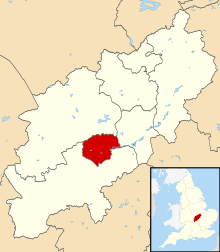University of Northampton (thirteenth century)
 |
|
| Active | 1261–1265 |
|---|---|
| Location | Northampton, England |
The University of Northampton was based in Northampton, England, from 1261 to 1265.
The university was established by Royal Charter after approval from King Henry III in 1261. It was the third university in England, after Oxford and Cambridge, and the 22nd in Europe. After being advised by bishops and magnates that Northampton was a threat to Oxford, Henry III dissolved the university in 1265, and signed a Royal Decree that banned the establishment of a university in Northampton.
In 2005 the decree was repealed by the Privy Council, allowing the then University College Northampton (founded in 1924) to gain university status and become the University of Northampton.
Northampton was, in the 13th century, a far more important town than is evident today, so it is not particularly surprising that a university was established there. The town was also, briefly, the King's seat.
The University of Northampton was founded in the reign of King Richard I (the ‘Lion-heart’) as a school. Richard patronised the institution and, according to at least one historian, between 1176 and 1193 the school at Northampton ‘rivalled or even eclipsed the Oxford schools’ The school lost a powerful supporter with the death of King Richard. However, it still enjoyed the patronage of Simon de Montfort through the reign of King John and his son Henry III.
There were violent 'town and gown' confrontations in Cambridge in 1249, and again in 1260, when there was major rioting resulting in the execution of 16 townsmen and the severe punishment of many more. Following this, several scholars fled seeking sanctuary in Northampton. In 1261 Henry III was requested to give, and granted, permission for the settlement of a university in the town.
...
Wikipedia
